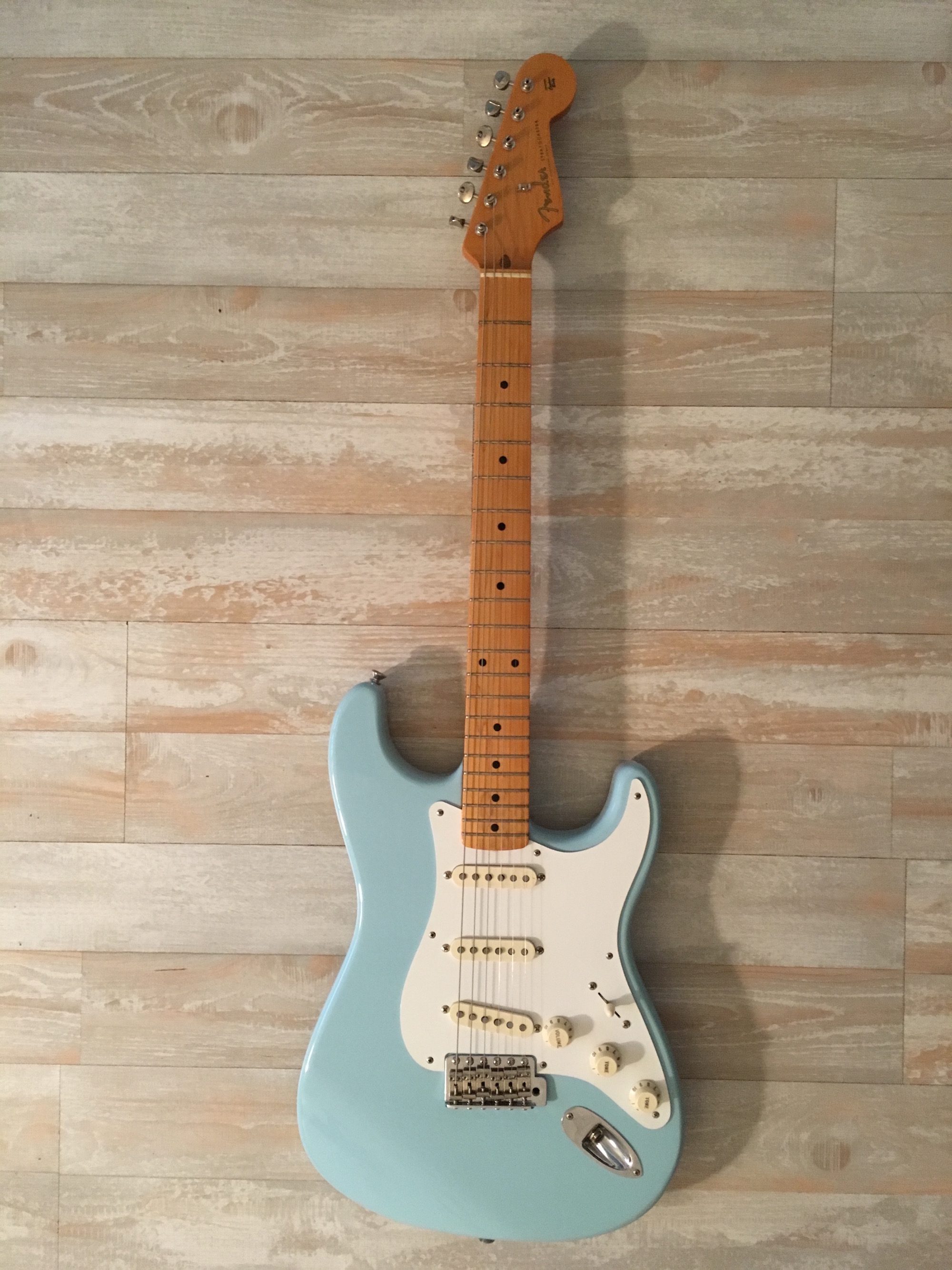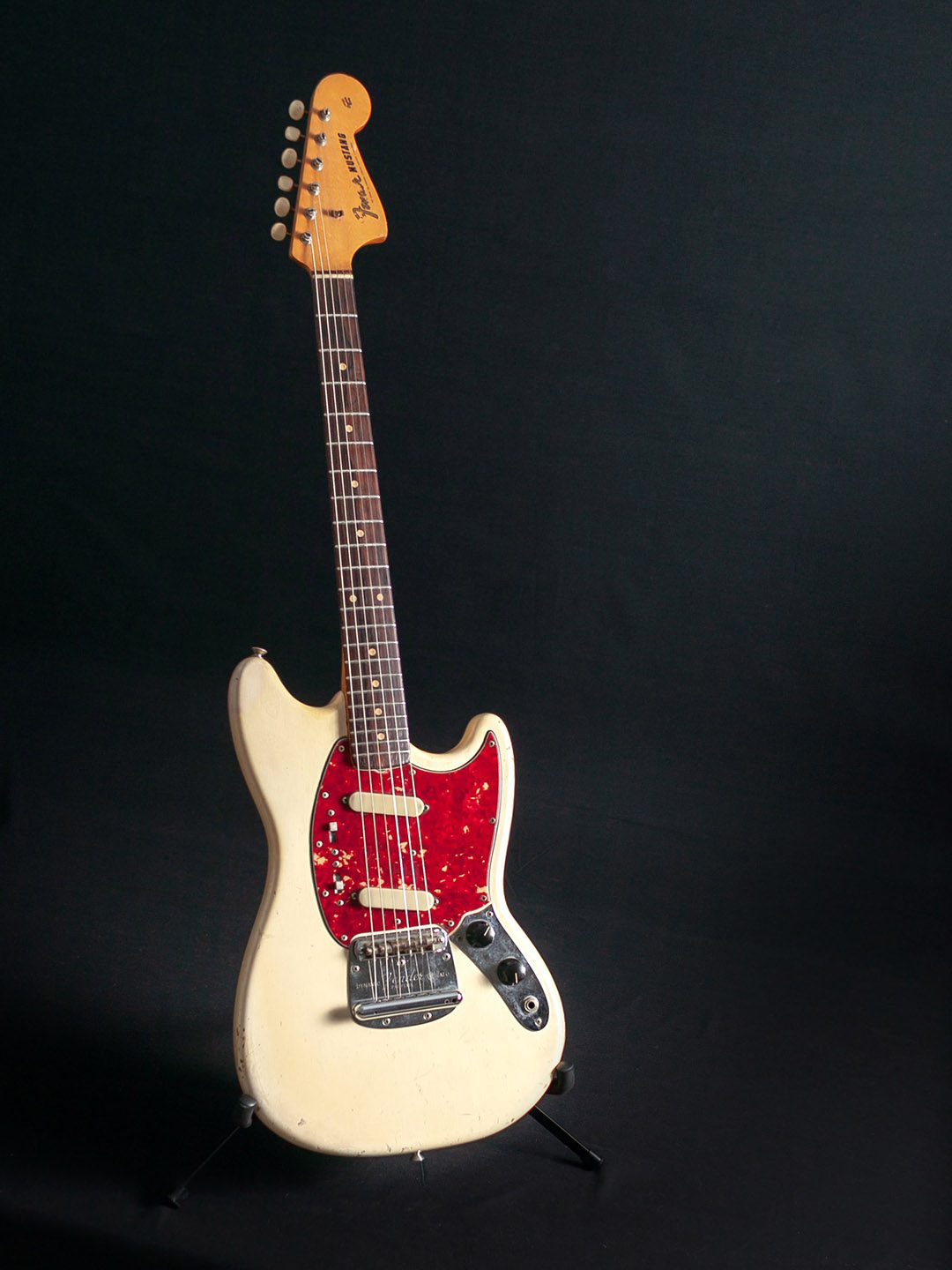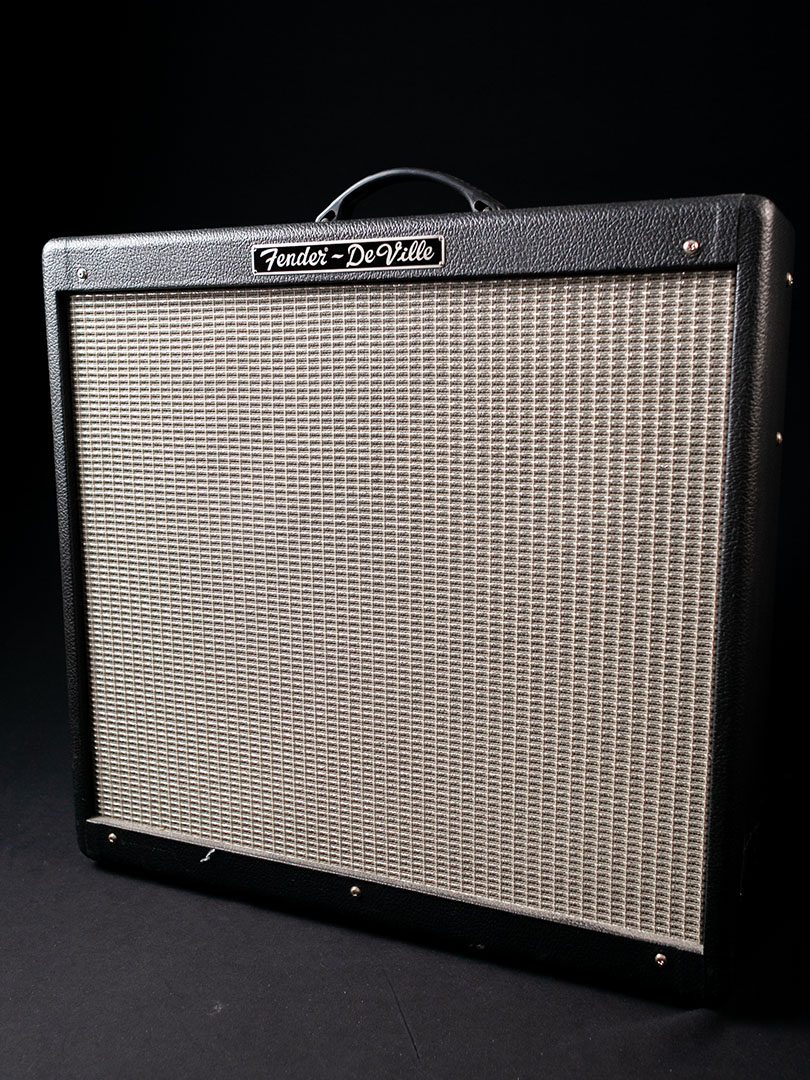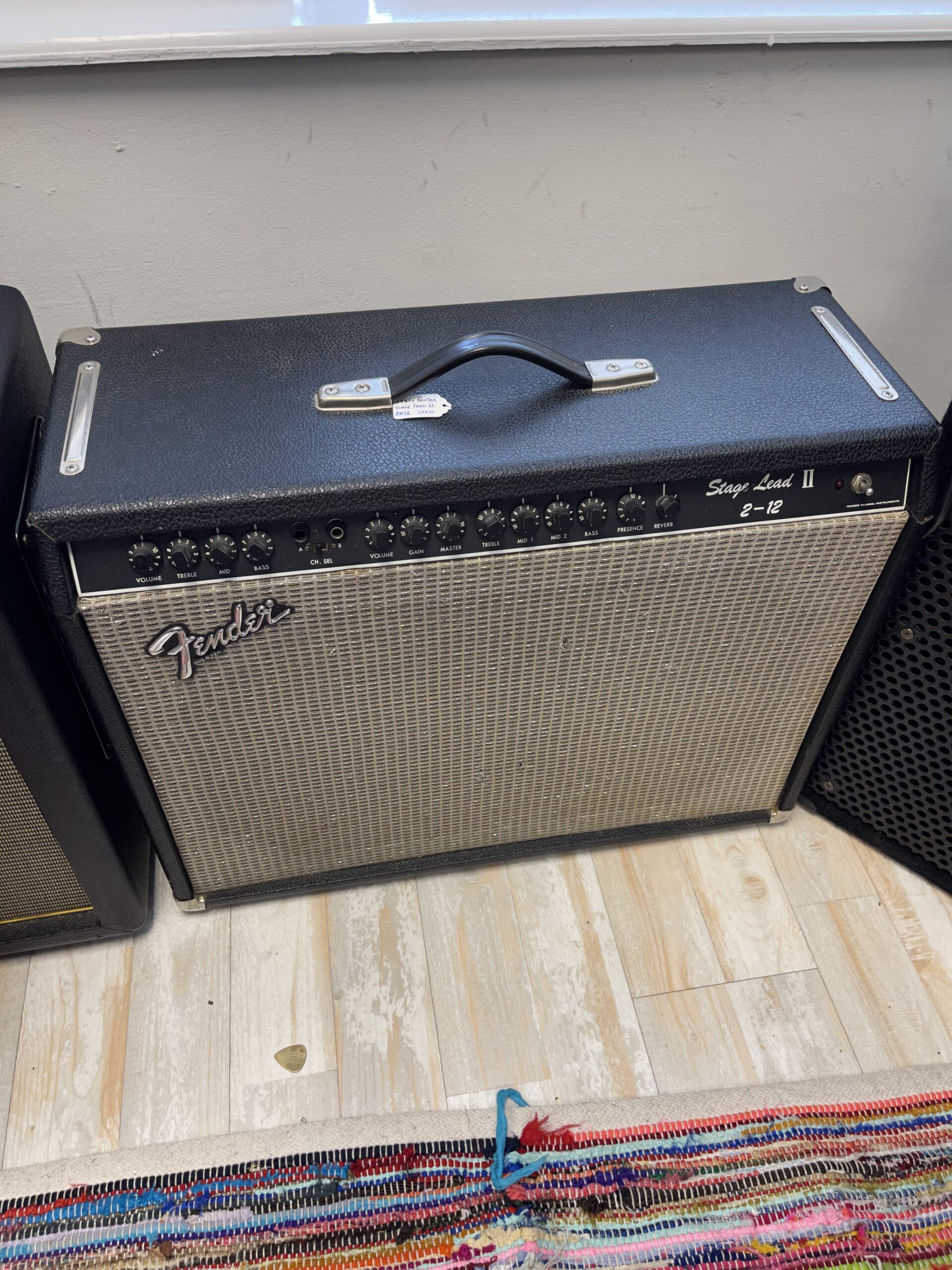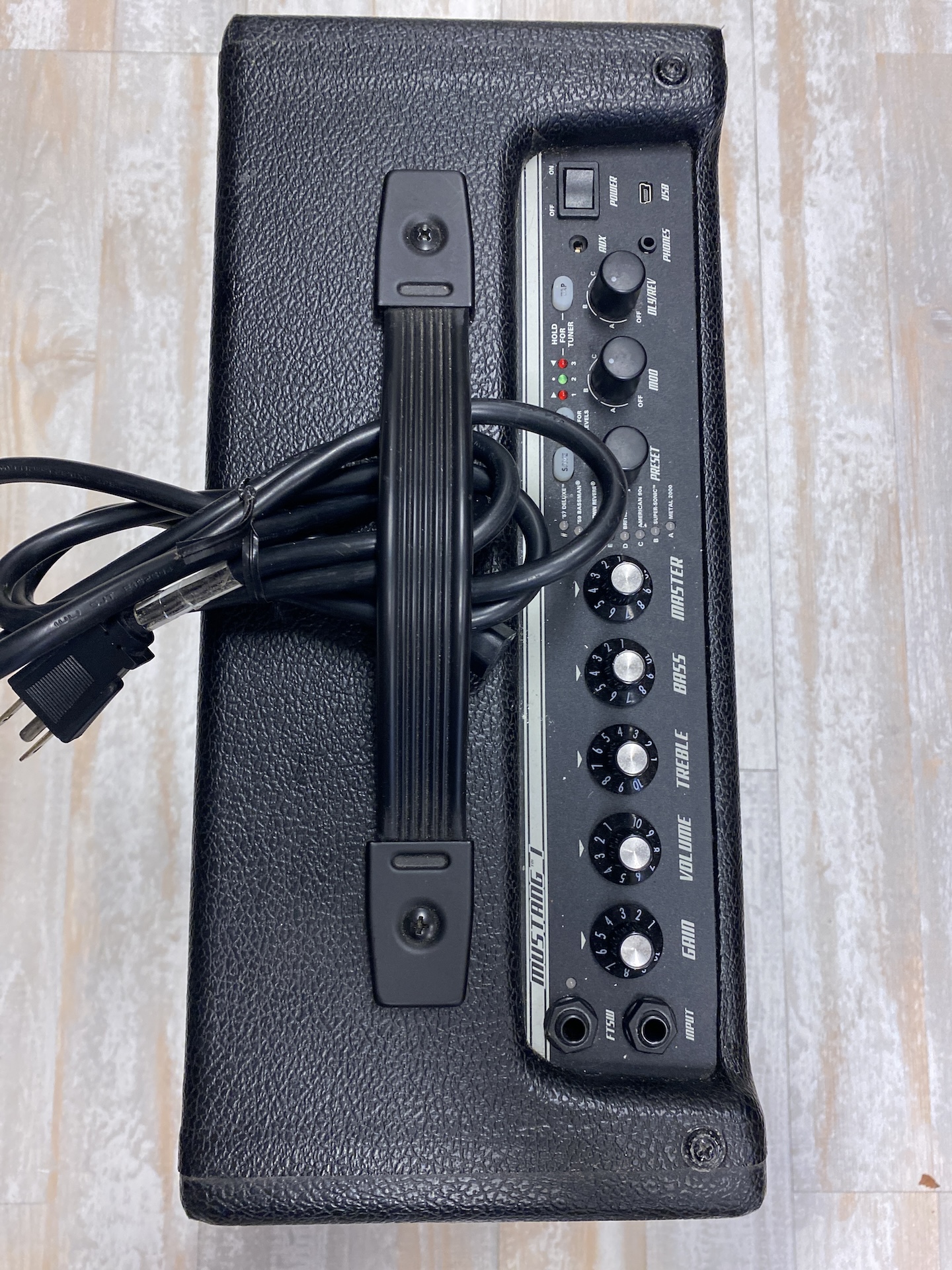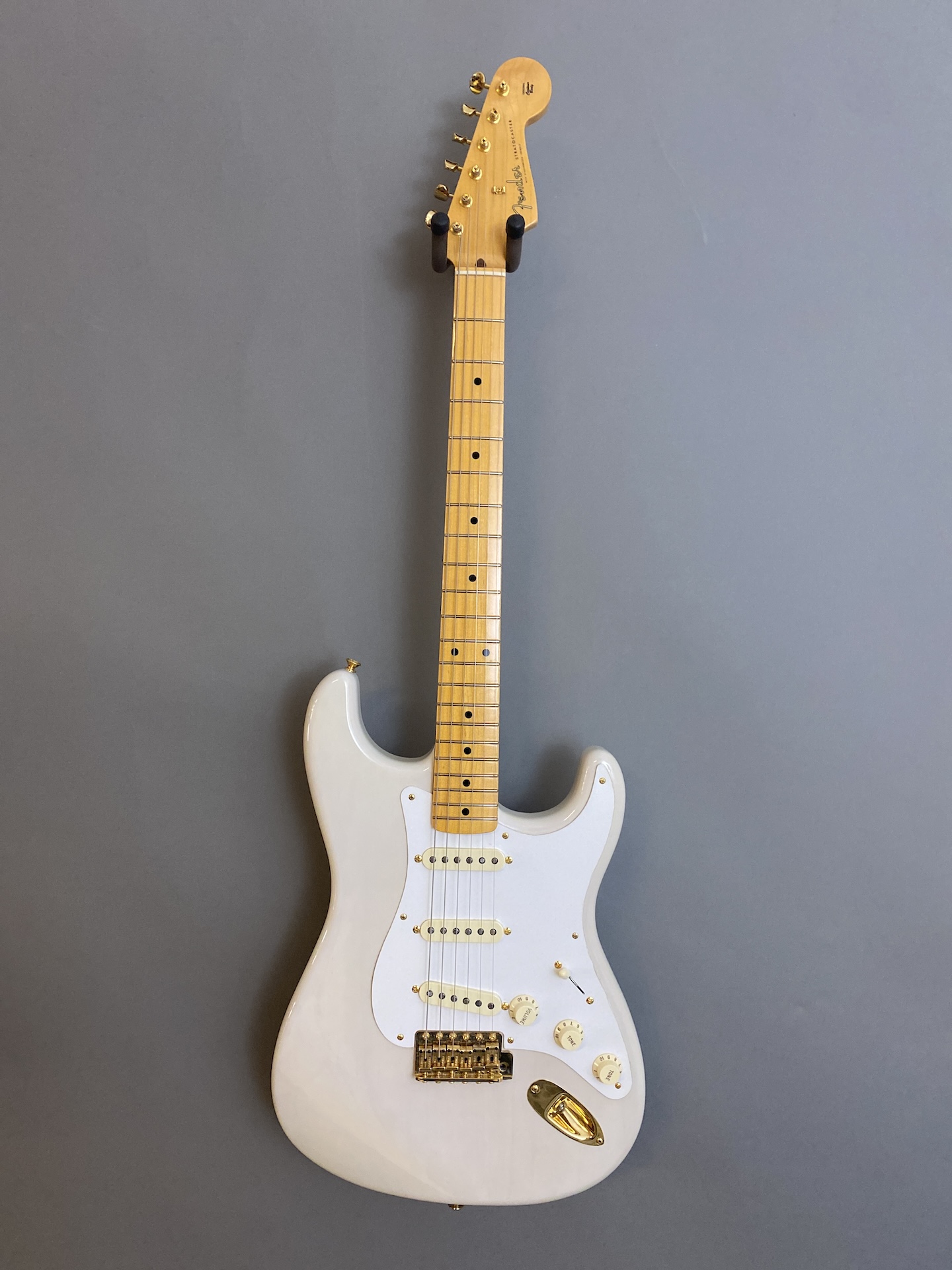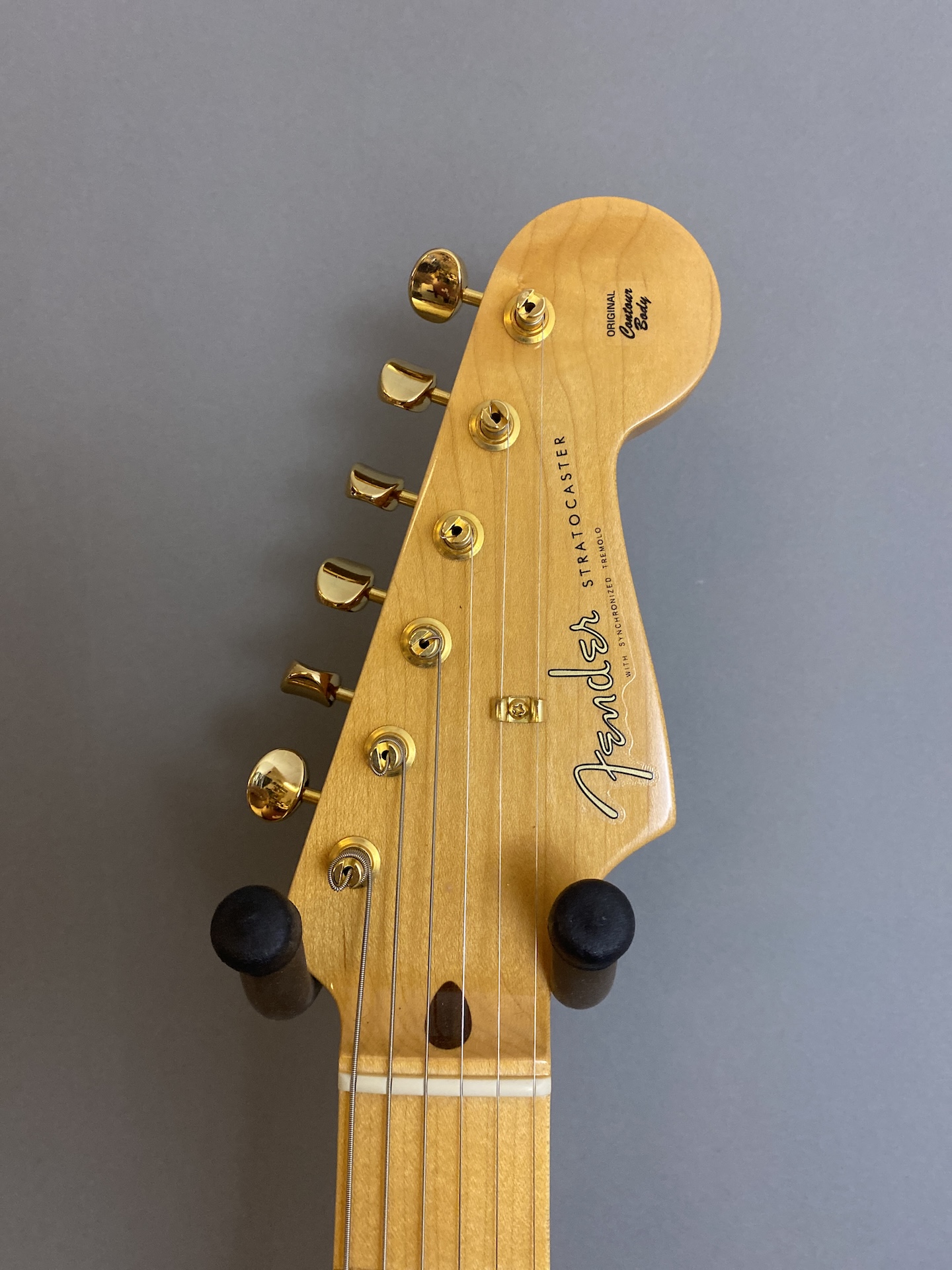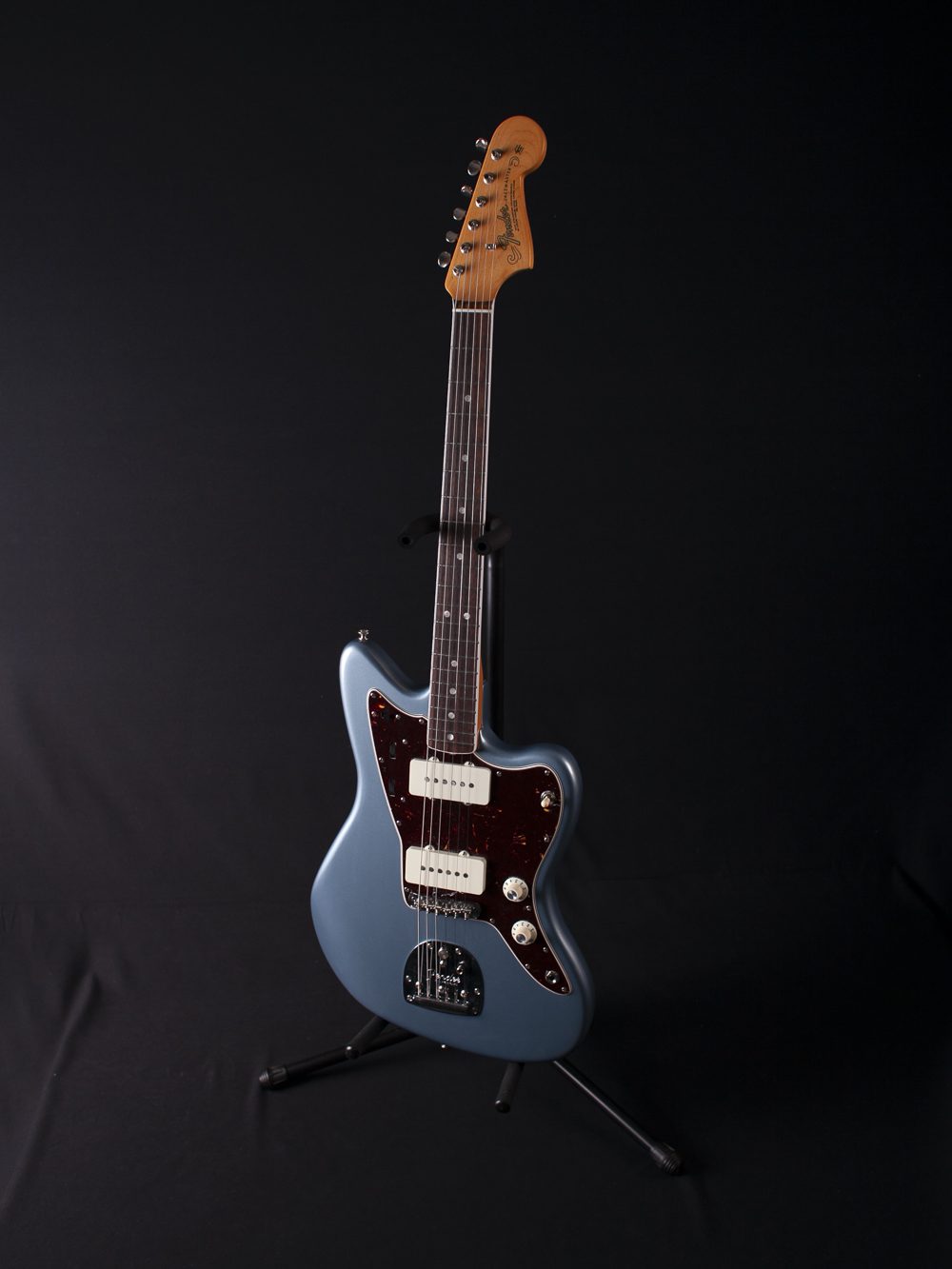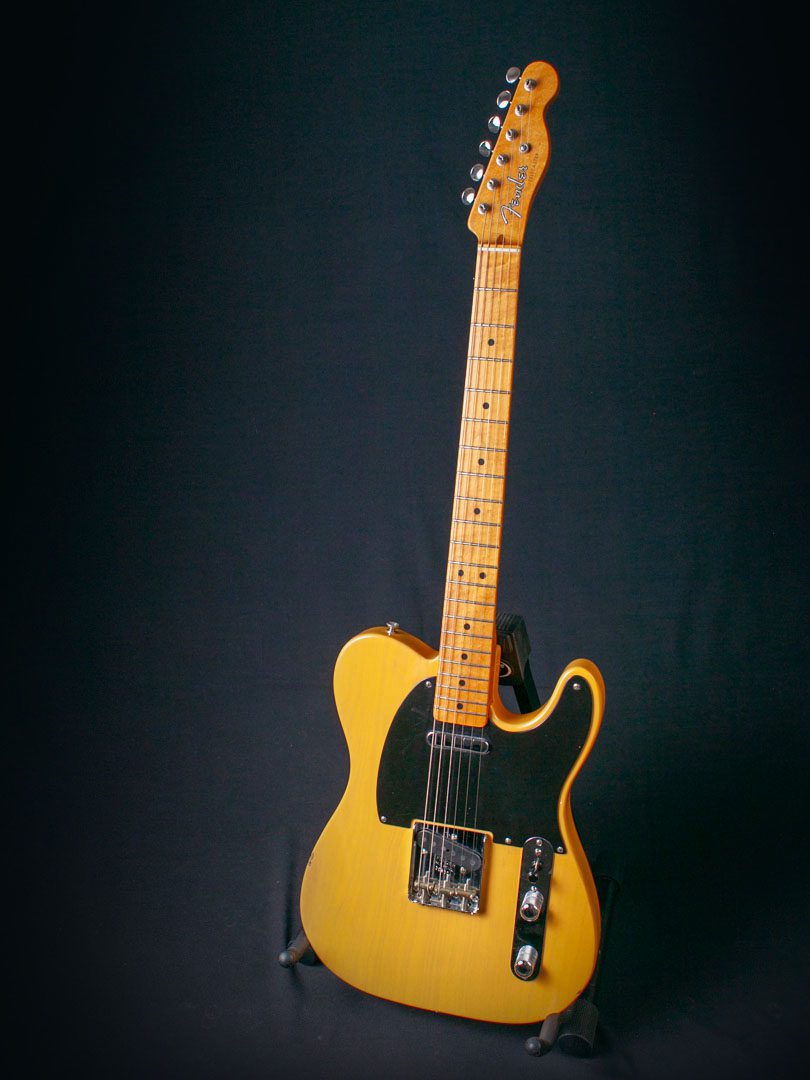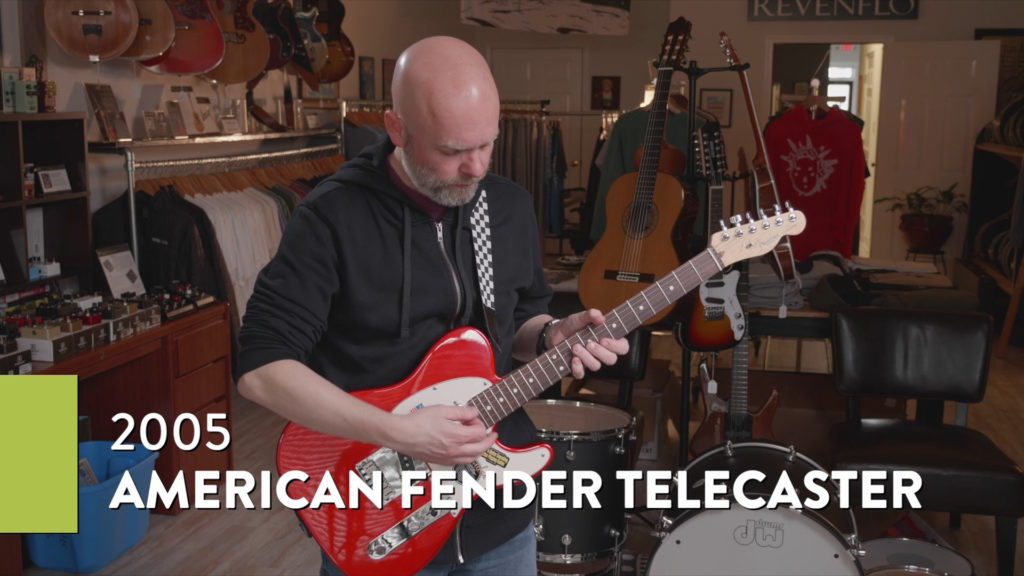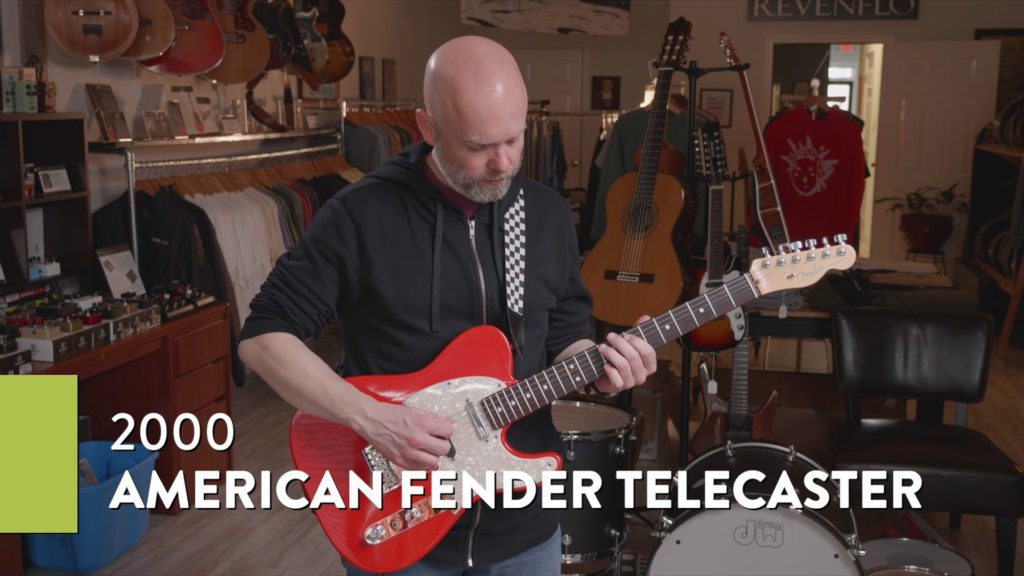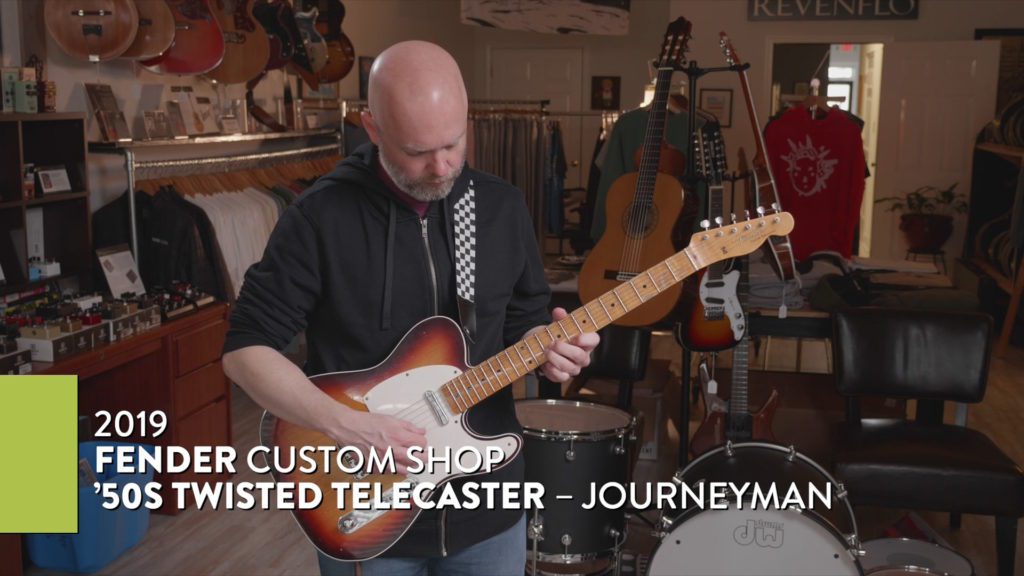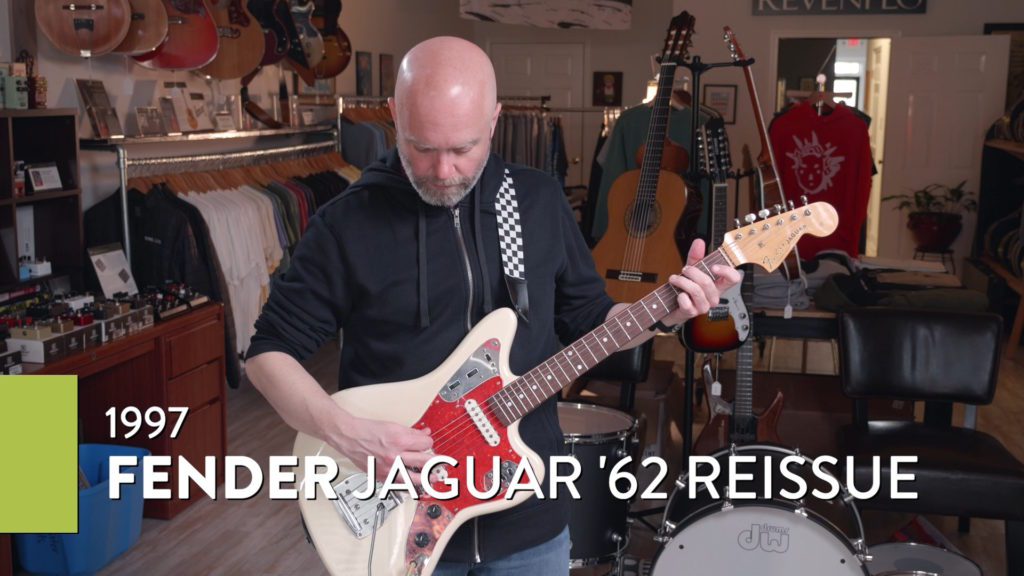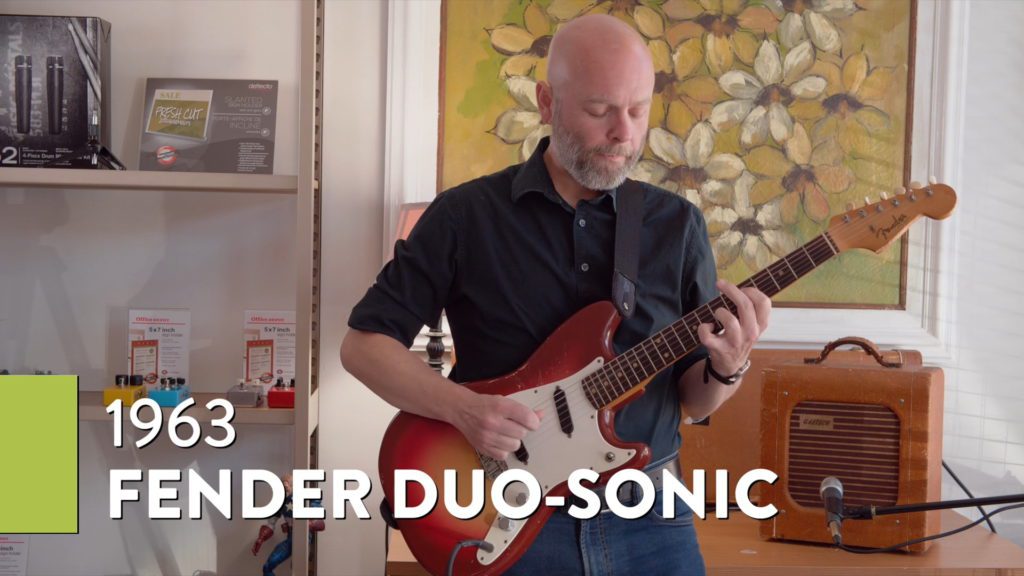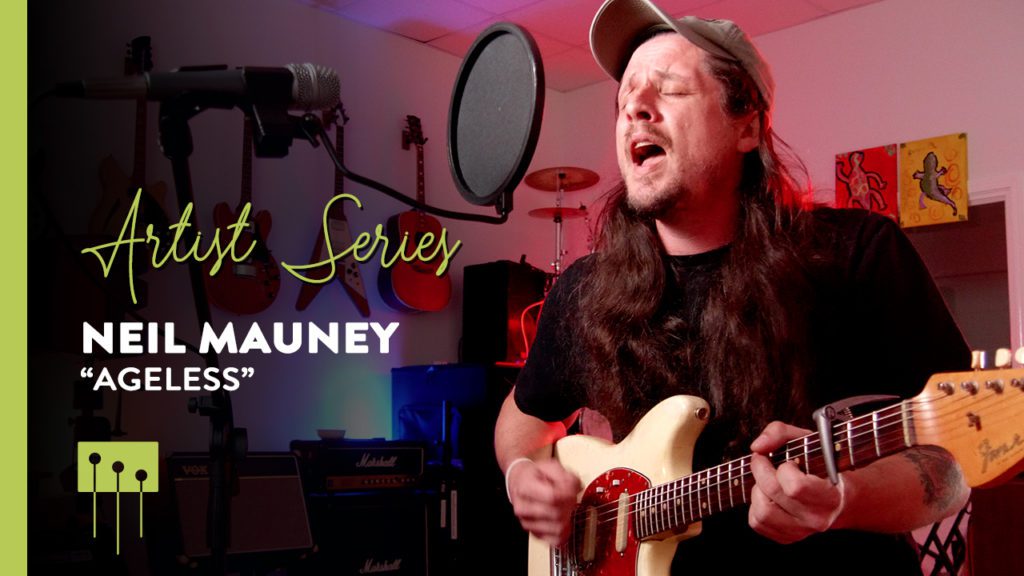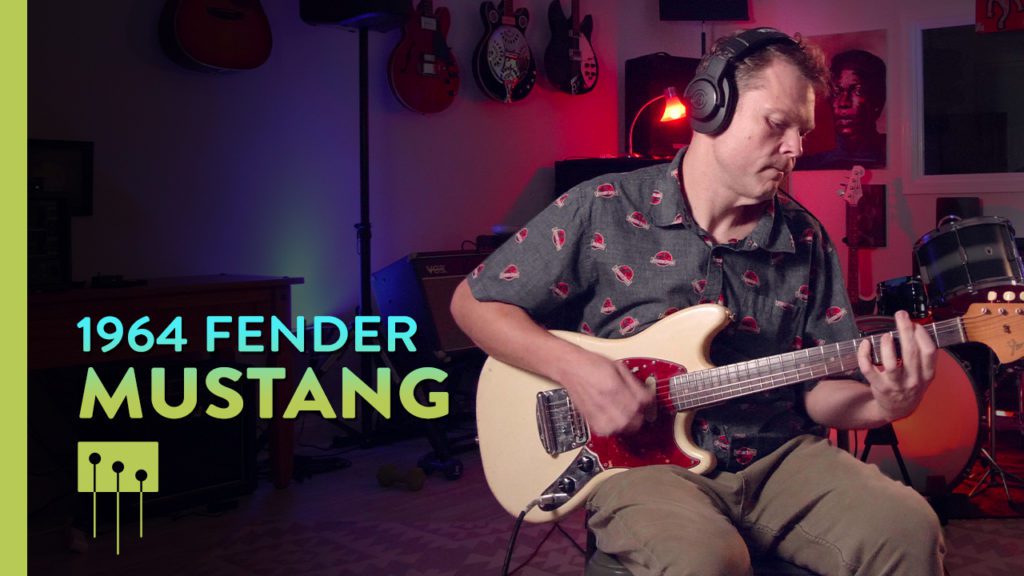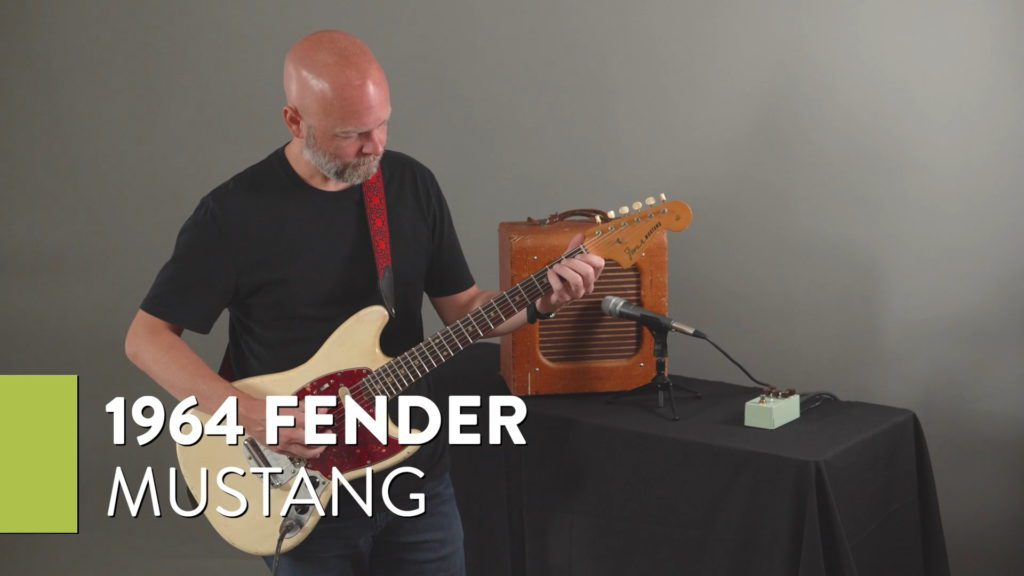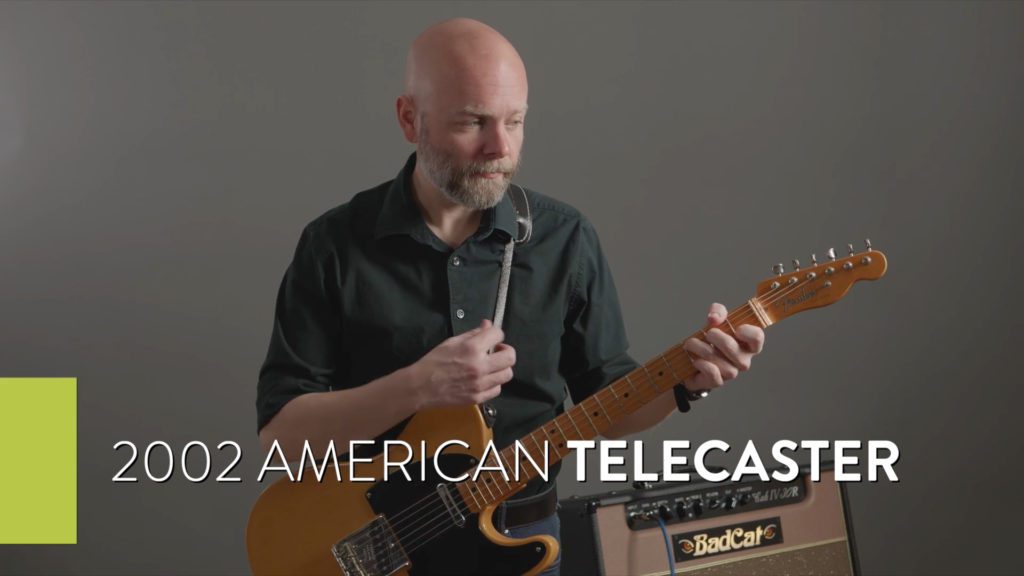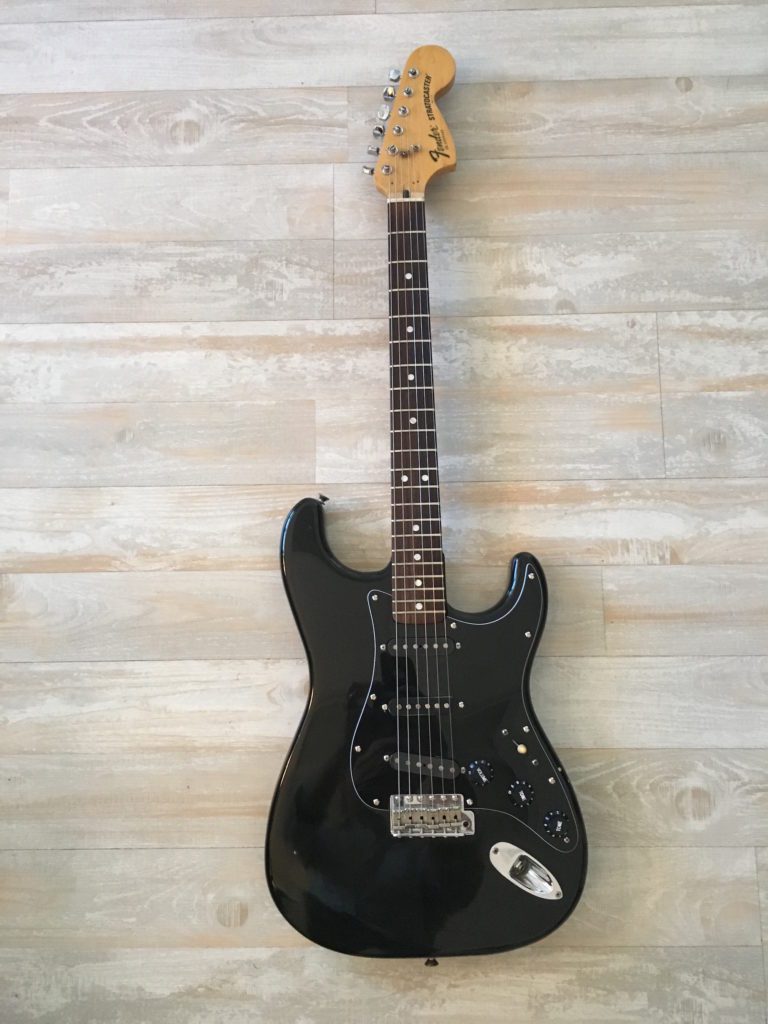Vintage Fender Electric Guitars
Leo Fender: Practical Genius
Leo Fender was not a musician. He took piano lessons as a child, and he could play a little on the saxophone. But that was about it. He was instead born with tinkering hands, and after losing his delivery job as a young man during the Great Depression, he opened Fender Radio Service in 1938 and turned his passion into a reality. Leo rapidly acquired knowledge, experience, and a reputation for electrical engineering. Things were going well for Leo, but little did he know that he would soon become the most influential electric guitar maker of all time.

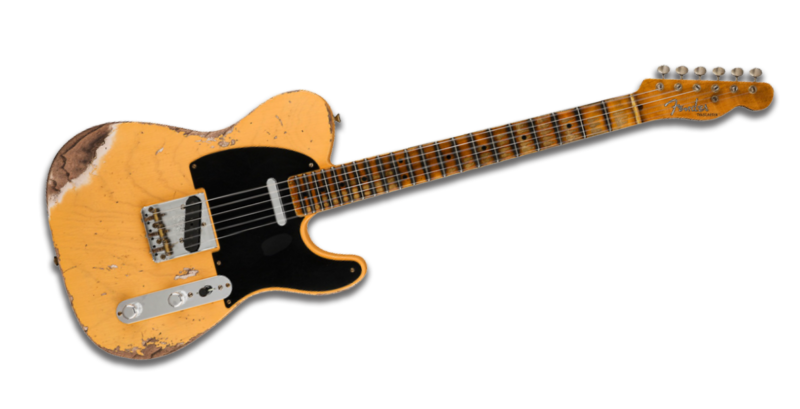
The Broadcaster: Entering the Guitar Market
After forming a musical instrument company, Leo spent two years listening to musicians and designing his solution… and that’s exactly how he saw it, as a solution to the needs and wants of the guitarist. It was a solid body electric guitar. The body was made of ash. The neck was a whole separate and removable part made of hard maple. The guitar was introduced as The Broadcaster and quickly found objection and law suit from the Gretsch Drum Company that already had a successful drum set with the same name. The name was changed to Telecaster, and so was born the first mass produced solid body electric guitar and still one of the most popular and best selling guitar models today.
The old Broadcasters are of course very sought after by collectors, but they are lacking a few improvements made by Leo – the constant tinkerer – for the Telecaster. Primarily, the Broadcasters had no tension bar in the neck. These can be recognized by the fact that they do not have an elongated dark strip running the back of the neck. This dark strip of wood is used to fill the deep groove after the iron pin has been mounted in the neck. Even more sought after by collectors are a group of guitars made with the Broadcaster name on the headstock, but were still in inventory when the cease and desist from the law suit took hold. So, Leo and his staff sanded the Broadcaster name off of the headstock, so it just said Fender with no additional monicker. These guitars are lovingly called No-Casters today.
The Telecaster: Practically King
Leo’s guitar was reintroduced to the market as the Telecaster, and he began to mass produce them from his shop in Fullerton, California. The Telecaster was a practical, pragmatic machine made for the playing musician. It was plain and workmanlike. A block of wood for a body. A removable neck. And completely rethought hardware that was easily repaired by someone with limited skill and knowledge. The instrument was completely unimaginable at the time of its release and branded Leo as the “Henry Ford of electric guitars.”
Upon seeing the Telecaster, Mr. Gretsch famously quipped, “It’s a paddle.” And as simple as the design was, the look captured the imagination of guitarists immediately and has done so ever since. The guitar was quickly adopted by the cowboy players who backed up the Western music stars. And it was adopted by everyone else too, because you could turn it up as loud as the amp would push it, and it would not feedback. This changed music forever, which just kept getting louder from there, with the guitar in the driver seat.
Guitarists of every stripe have come to love the Telecaster for its elegant simplicity and for its dry bite and twangy punch. Its fierce and sharp sound is immediately recognizable. The sound has helped define the sound of modern country music for sure. But Keith Richards and The Boss famously rocked their Telecasters as well. And indy rockers are equally as likely to be playing a Telecaster. Even jazz players appreciate the Telecaster – due to its versatility of sounds.
The Telecaster is still today one of the best selling guitars in the world. Countless designs have copied the Telecaster, so much so that the shape is now a common noun referred to as a “T-Shape” guitar. Guitar makers of all kinds make T-shape models (all of which are just some slight variation on Leo’s original design). As it’s been said by so many that it’s surely a cliche at this point – Leo got it right from the beginning.
The Stratocaster: Guitar of The Future
Western Swing guitarist Bill Carson was less impressed with the Telecaster and wanted a new design. Other players had ideas for Leo as well. So, Leo did what he did well, he listened. And he responded with an unexpected and exceptional solution to the demand of his audience: The Stratocaster.
The Stratocaster is to this day considered by many the perfectly designed guitar. For this iteration, Leo added individually adjustable bridge saddles to be able to better intonate each string. He gave it three pickups with a 5-way switch. The in-between positions on the switch combined pickups and even put them out of phase with each other (think Jimi’s “Little Wing” sound). He added a vibrato unit that could be used in either direction and return to proper tuning. And he contoured the body for enhanced comfort over the slab-body Telecaster’s harsh edges.
Leo released the Stratocaster in 1954 to instant success. Like the Telecaster, the Stratocaster is one of the best selling guitars in the world, still to this day. It has been copied to the point of making it a common noun as well — the S-Shape guitar style. As many (or more) guitar makers have S-shaped models in their line up as well.
Immediately following the release of the Stratocaster and continuing their reputation as consumer-oriented guitar makers, Fender refined and improved its design until eventually settling on its relatively unchanged form since.
A Legendary Debut
In 1957 a Texan rock band named the Crickets appeared on the Ed Sullivan Show, a television variety show that would go on to jumpstart the careers of many iconic musicians. The band played two songs: “That’ll Be The Day” and “Peggy Sue.” The band was lead by a quirky cool, young front man by the name of Buddy Holly, who wrote and sang the songs. That night, Holly played a red-burst Fender Stratocaster. The guitar playing and loving world went wild for it, the Stratocaster was suddenly selling so faster Leo could barely keep up. The Stratocaster is one of, if not the, most used and replicated electric guitar design ever, and it has continued to win the hearts of guitar players around the world.
The Duo-Sonic: Small but Mighty
The Fender Duo-Sonic was introduced in 1956. Despite its “starter guitar” reputation, this model is regarded as a petite powerhouse. The original “Duo-Sonic” features two single-coil pickups in a humbucking style configuration and a vertical switch on the lower horn of the body. Those single-coil pickups bring balance to this model while the angled bridge pickup provides its memorable, mid-range tone. That tone built the Duo-Sonic reputation for being a compact pit bull that can deliver super-aggressive bridge and neck tones that are the ideal hybrid of Tele twang and Strat squall. When strumming clean rhythms, its tone has a wonderful metallic clang with jangly bite and a funky mid-range punch. It firmly established Fender as a company that offered student-model guitars of supreme quality. This model, specifically, would become a favorite of current indie and alternative artists because of its intense roar.
The Jazzmaster: A Fan Favorite
While the occasional Jazz musician picked up a Stratocaster or Telecaster model, Fender guitars were dominating the Rock and Country genres. Leo decided to create a model that borrowed from his early steel guitar designs that had inspired him to enter the music market in his earlier days. He specifically focused on the rhythmic needs of the Jazz genre and the fact that high-brow and old-school players usually sat when they played in jazz ensembles. Again, he was thinking about solutions for working people.
Leo released the Fender Jazzmaster in 1958. The guitar had a brand new Fender floating vibrato and floating bridge. The strings went over the bridge and attached to the vibrato tailpiece. This length of string served to limit sustain. It was also the first guitar to use the “Trem-lock,” which allowed the guitar to function in a vibrato-free mode and boasted the added function of holding the guitar in tune even if a string popped while the guitar was played. Arguably the most important addition to this model is the pickup-switching system, which utilized separate circuits for regular and rhythm settings. The circuit was engaged using a slider switch above the neck pickup, and the second setting let the player roll off his treble and volume without turning either knob. Because of its array of new features, this model quickly gained an immense following and continues to be a top-tier option for players and collectors.
The Fender Mustang: A Cult of Personality
The Fender Mustang is an amalgamation of several successful designs including the Jazzmaster, the Musicmaster, and the Duo-Sonic. Released in 1964, this guitar would be considered the final “new release” model during the Leo Fender years. One of the most notable features of this design was the slide control that could be switched on or off and the phase of the pickup that could be reversed, creating a unique sound that could remove the 60-cycle hum of single coil pickups (making it quieter, like a hum bucking pickup).
Aside from the pickup, the primary feature of the Mustang was its unusual tremolo system called the Dynamic Vibrato System. This was the first Fender model to truly lend itself to customization. While it was popular during the time of its release, it was rebranded as an indie-rock workhorse by the 1990s. You could find this model in the hands of grunge icons in the US and Britpop superstars in the UK, establishing “ The Cult of the Fender Mustang.”
The End of an Era
1964 is known as the last year of an era because Leo sold Fender to CBS Corporation in January 1965, and they made immediate production changes. Over the decades, Fender has become the largest guitar brand in the world. They have added a few designs over the decades, but nothing that they (or anyone else) has put out there is more quintessential to the electric guitar than Leo’s original designs – the Tele, the Strat, then Jazzmaster/Musicmaster/Mustang. It’s been said many times, but we should say it again, it’s just astounding what all he got right the first time (multiple times). To great engineers!

